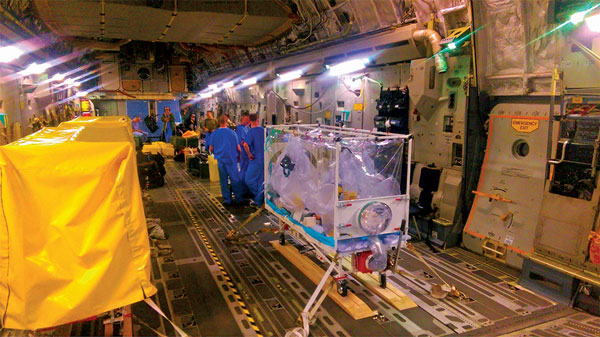Volume 25, Number 1—January 2019
Synopsis
Aeromedical Transfer of Patients with Viral Hemorrhagic Fever
Figure 8

Figure 8. Multiple Air Transportable Isolator patient transport systems on a single aircraft (Boeing C-17 Globemaster). A single isolator is set up for the confirmed viral hemorrhagic fever case-patient; 2 additional isolators (left, covered) are available for the 2 exposed patients should they deteriorate or become symptomatic in flight.
Page created: December 18, 2018
Page updated: December 18, 2018
Page reviewed: December 18, 2018
The conclusions, findings, and opinions expressed by authors contributing to this journal do not necessarily reflect the official position of the U.S. Department of Health and Human Services, the Public Health Service, the Centers for Disease Control and Prevention, or the authors' affiliated institutions. Use of trade names is for identification only and does not imply endorsement by any of the groups named above.